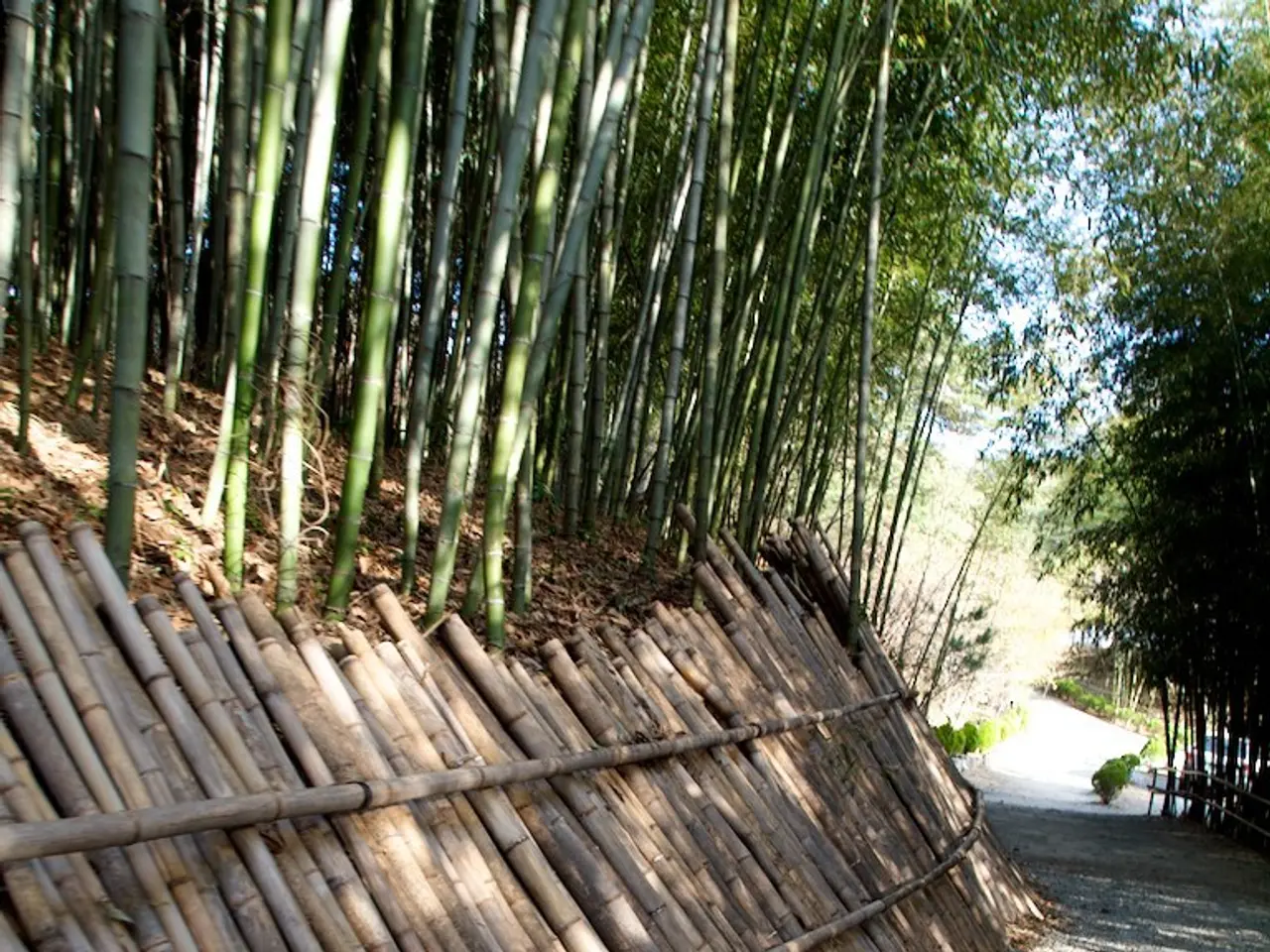Switching Soil for Vigorous Bamboo Regrowth
Bamboo, a versatile and striking plant, thrives best in conditions that promote drainage, air circulation, and healthy root growth. To ensure your bamboo flourishes, follow these essential steps when repotting.
Choosing the Right Pot
Select a pot slightly larger than the current one, with drainage holes to allow excess water to escape. A stable pot, such as a heavy clay pot, can support bamboo's weight and prevent tipping.
Preparing the Soil
Use a well-draining soil mix, incorporating components like perlite or pumice, to improve drainage and aeration. Avoid heavy garden soil alone, as it can compact and suffocate roots.
Encouraging Drainage
Instead of layering gravel or rocks at the bottom, place a breathable barrier like a paper coffee filter over the drainage holes to keep soil in yet allow water to pass freely. For extra drainage, adding a thin layer of coarse material like expanded clay pellets can help, but gravel is generally not recommended.
Careful Removal and Trimming
Water the bamboo a few hours before repotting to ease soil loosening. Gently tap the pot's sides, pull the plant out by its base, and use a knife along pot edges if roots cling. Trim any dead, damaged, or unhealthy roots with clean, sharp scissors or pruning shears to encourage new, healthy root growth and prevent rot.
Repotting Correctly
Place a layer of fresh potting mix into the new pot bottom, position the bamboo so its roots are spread out and at the same depth as before, then fill around roots with soil. Press gently to remove air pockets without compacting too tightly, ensuring soil remains loose for air circulation.
Additional Tips
Avoid blocking drainage holes with rocks, which may cause root rot by keeping soil saturated. Elevate the pot slightly to allow free water drainage if necessary. Regularly check watering habits since bamboo likes moist but not waterlogged soil.
Root Division
Perform root division during the dormant season to minimize the risk of damaging fresh growth. If the bamboo is severely root-bound, use a saw to cut back the thick rhizomes. Some sections may not survive the division process.
Improving Soil Structure
Add materials like perlite, coarse sand, clay aggregates, vermiculite, and compost to improve soil structure and prevent compaction. Consider using a bamboo fertilizer after trimming.
Watering
Water the newly potted bamboo generously, but do not soak it. Stop watering as soon as you see water draining from the hole in the bottom of the pot.
By following these guidelines, you can help your bamboo thrive by ensuring proper drainage, air circulation, and healthy root growth. Happy repotting!
[1] Gardening Know How. (2021). How to Repot Bamboo: A Step-by-Step Guide. Retrieved from https://www.gardeningknowhow.com/plant-care/houseplants/bamboo/how-to-repot-bamboo.htm
[2] The Spruce. (2021). How to Repot Bamboo. Retrieved from https://www.thespruce.com/repot-bamboo-718207
[3] The Bamboo Company. (2021). Repotting Bamboo. Retrieved from https://www.thebamboocompany.co.uk/blog/repotting-bamboo
[4] The Sill. (2021). How to Repot Bamboo: The Ultimate Guide. Retrieved from https://www.thesill.com/plants/bamboo/how-to-repot-bamboo
Incorporate a well-draining soil mix, such as one with perlite or pumice, to promote drainage and aeration in your bamboo's new home-and-garden environment, enhancing the lifestyle of your bamboo plant. A stylish yet functional pot with drainage holes can support bamboo's weight during its new growth phase, ensuring both its longevity and beauty in your home-and-garden setup.




